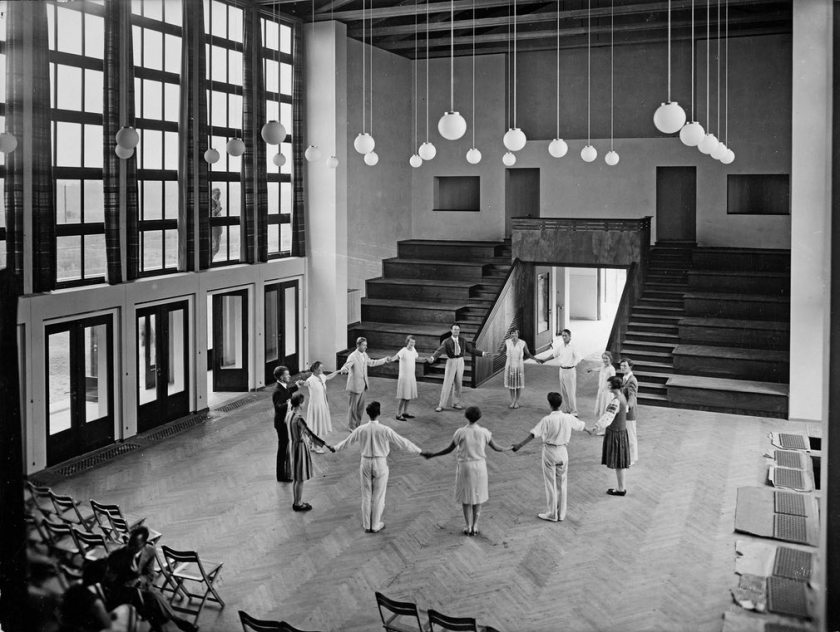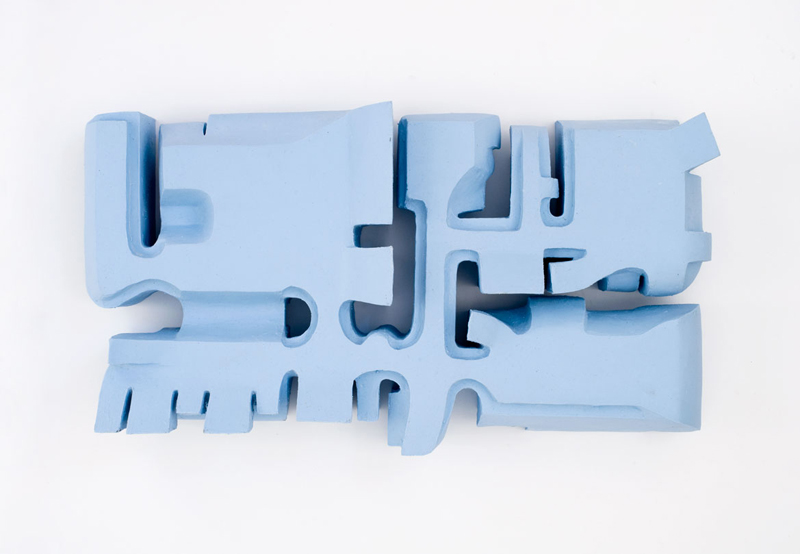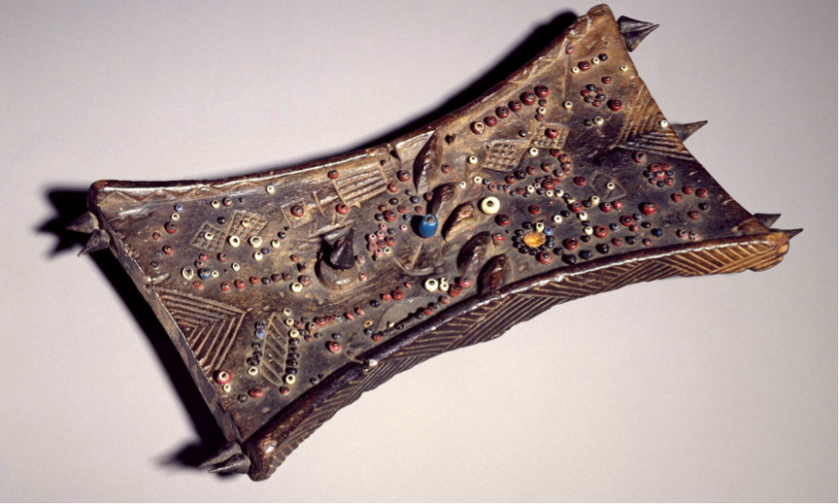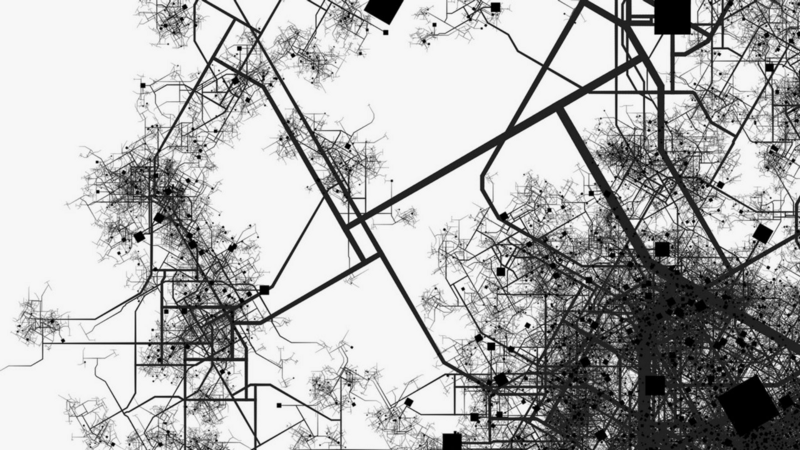
Musikheim, main hall, Frankfurt/Oder, 1929 The Bauhaus Photograph- © Atelier Leopold Haase & Co
A couple of months ago a started a research on “deep” change. Check out the previous posts here and also this one where I highlighted the importance of patrimony and its combination with contemporary. Or the combination of the core organisational DNA with the DNA of innovation.
Although the term “deep” is a somewhat glorifying term – as glorifying as “meaningful” or “authentic” – it has some meaning as the change I am trying to describe probably has its source in the more deeply wired connections in our brains and being fully conscious, as opposed to the western consciousness – starting more or less with Pythagoras – which is anchored in a two dimensional, linear either/or Boolean consciousness.
With my background training as an architect, I have probably developed a greater multi-dimensional sensitivity about spaces, and I stumbled by accident on the notion of space and/or structure as a store for memories, or wisdom if you want.
Lately, I am noticing plenty of videos that use connected particles moving around in some kind of grid, creating patterns of movement.
Here is one video by futurist Gerd Leonhard about the tension Technology vs. Humanity and the connectedness or over-connectedness of humans and things.
The moving grid/nodes representations made me think of some artwork I discovered lately by visual artist Simone Reuss on spacial relations. The original post and background is here, but I made my own little animation with it and added a self-composed soundtrack. I made it as part of a brand new presentation/performance on the topic of “deep” change.
Spacial relationships may be one of the aspects of being human that we are losing by using too augmented reality. Like you loose your physical orientation skills by driving/walking around all the time with Google Maps or GPS driving.
I like the idea of human movements creating invisible spaces of memory. Leaving traces of flows and movements.
In the second part of my short movie, you will see a drawing documenting human flows in an office building. How humans cut corners, how their movements are dictated by the structure/floor plan of the office. What I really like is how the artist made 3D prints in silicone of these patterns. It is as if the 3D print object is a store of memory of the movements and the structure.

Movement Spaces - Silicone 3R print - Simone Reuss - 2012
One can of course question what came or should come first: the structure influencing the flow, or the flow influencing the structure? I remember some Californian University experimenting with spaces with no walls, and let the users define “as-they-flow” where the separations should be.
Fluidity seems to always find its best structure
Flow happens first, it influences the structure and determines the capacity of the structure to further enable connections.
But that structure in its own terms then also becomes patrimony. A memory space. A tool to memorise and remember the patrimony memory of a talk, a plot, a corporate narrative, or a corporate DNA.

A lukasa memory board. Courtesy Brooklyn Museum/Wikimedia
I learned that “Memory Palaces” are indeed an old mnemonic technique to build places of memory. Check out this great post about “Memory Palaces”.
Cultures without writing are referred to as ‘non-literate’, but their identity should not be associated with what they don’t do, but rather with what they do from necessity when there is no writing to record their knowledge. Cultures without writing employ the most intriguing range of memory technologies often linked under the academic term ‘primary orality’, including song, dance, rhyme and rhythm, and story and mythology. Physical memory devices, though, are less often included in this list. The most universal of these is the landscape itself.
It is about recording knowledge, or even better know-how, through experience, and not because being told/teached to do so.
Culture is recorded know-how.
Is there a way to “design” the such spaces of memory? Joe Brewer has done some solid work with his Culture Design Labs, laying the groundwork for a design science of intentional social change to rapidly evolve our systems of government, the practices and structures of market economies, pathways through educational institutions, and journalism models in the media.
Not as some loose theory of change, but by creating a rigorous scientific model. That’s interesting and refreshing: looking at change as a science, not as a theory.
Every story, every organisation has structure. How did that structure come into being? How do we change structure? How do we change flows influencing that structure? Or as Jean Russell says: how do we cultivate flows?
Hope it sparks something 😉 Cheers!

I am in the business of cultivating high quality connections and flows to create immersive learning experiences and structural change. Check out: https://petervanproductions.com/


I love to be moved and inspired by you!
thx for you kind words of encouragement 😉